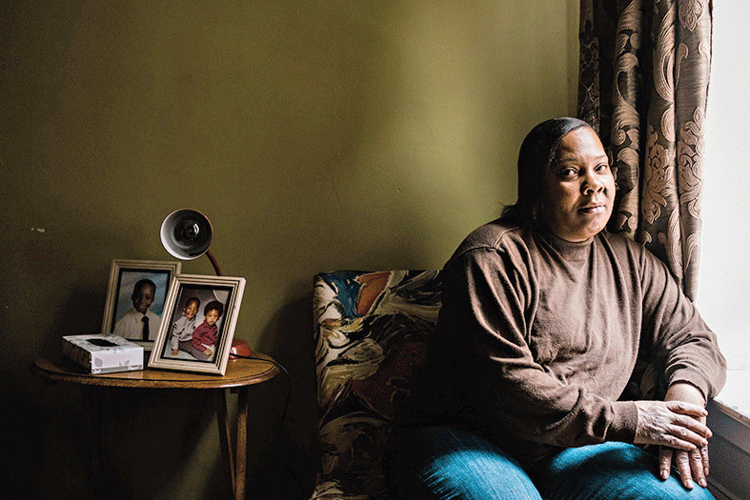When New York City closed its public schools, Cindy Urena, a home health aide for Sunnyside Community Services in Queens, faced a choice: stop seeing a client with severe epilepsy or leave her seven-year-old daughter alone at home.
Urena, 39, earns $15 an hour, and like half of New York City’s direct care workers, relies on food stamps even when she is working.
She made her choice. Now she has no income at all.
Kelly Takemura faced a different problem: as the pandemic spreads, who gets care and whose care becomes inessential? Takemura is the director of nursing at Select Care Home Care Services in Manhattan, whose 156 aides have been working and riding the subways without masks or hand sanitizer because of shortages.
The most acute cases are still getting care; for others, the agency has pulled back on visits for the safety of both aides and clients.
“It’s like times of war,” Takemura said. “You have to prioritise.”
No city in America has been hit harder by the coronavirus than New York, which surpassed 8,000 confirmed cases as of Saturday, and no part of the city’s vast health care system is more fragile than the loose corps of low-wage home care providers, overwhelmingly women of color.
While other New Yorkers heed the governor’s call to remain inside, more than a quarter-million home care workers travel the subways and crowded apartment blocks to bathe, dress, feed and spend time with the city’s most vulnerable residents — those who, when hospital beds become scarce, may be passed over in favor of younger patients.
Covid-19 is especially lethal for older adults and people with serious underlying health conditions. For some, their home attendant is both their best protection and their most likely source of infection.
Nearly half of all home aides in New York City live in poverty or near it, according to a study from PHI. In 2018, the average hourly wage for a home caregiver was $13.50. Even if they wanted to stay home from work, few could afford to.
They are a vulnerable lifeline to some of the city’s most vulnerable residents, managing their own child care and financial stress, their clients’ fears and their own.
The risks in their daily work are not only to themselves, but to their clients and their own partners and children. The care they give is also a potential opening for infection.
Statewide, two-thirds say they do not have access to adequate personal protective equipment, like masks and hand sanitizer, according to the Home Care Association of New York State.
Delva Walker lost her income when her patient’s family decided it was too risky to have aides coming in and out of the home — they wanted live-in care to minimize the dangers.
“I have bills to pay, rent to pay, but it’s something beyond my control,” Walker said. After 30 years as an aide, she said, she accepted the risks involved.
“In my line of work, you have to do everything possible to give them care,” she said. “It’s in the contract. It’s the work I chose because I love to help people. My care for people is beyond. When they have a blizzard, I go.”
Deidre Armstrong, 39, who provides live-in care for an 89-year-old woman, said her life has also been upended. She has not been home to her fiancé and teenage niece since Sunday. “But when I do,” she said, “I have to keep a distance from them. No hugging. No kissing.”
Like ride-share drivers, aides often work for multiple agencies, following different safety protocols. Clients, too, might have a night aide from one agency, a morning aide from another, weekend aides from a third and family members filling the gaps.
So risks pass between aides and clients, but also among aides and other aides, family members and fellow subway riders. For the homebound, any health setback might mean a trip to the emergency room, which for the aide means a marathon wait in the place where the virus is most clustered.
At RiseBoro Community Partnership, which sends 1,100 home care workers into 700 homes in Brooklyn and Queens, Glenmore Matthews, the vice president of home care, said he was trying to stagger travel times and to change routes to reduce risk on the subways.
He talked about the financial toll on agencies like his. Any missed visits means lost revenue. “If we don’t provide services, we cannot bill Medicaid,” he said. “It’s a domino effect.”
James Reynolds, a physical therapist who works for the New Jewish Home, said he tried to maintain social distancing when visiting clients, but it was not always possible. Many of his patients were recovering from falls, learning to regain balance. “So I have to stand close enough to assist,” he said.
Reynolds grasped a cruel irony: his care might be the thing that kills a patient. “I am looking at the risk and reward,” he said. “If a patient is a fall risk but has family around them, I might not seek more visits, because those visits put them at risk.”
Meals on Wheels deliverers have also cut back on personal interactions, ordinarily a key benefit of their service, especially for clients who have few other human contacts. Instead of entering apartments, now the deliverers place food at the door and step back six feet.
“We’re trying to have distance but get a visual idea of what’s happening,” said Tania Collazo, who runs the food delivery program in Queens for the Jewish Association Serving the Aging, or JASA, which serves 430 homebound people.











